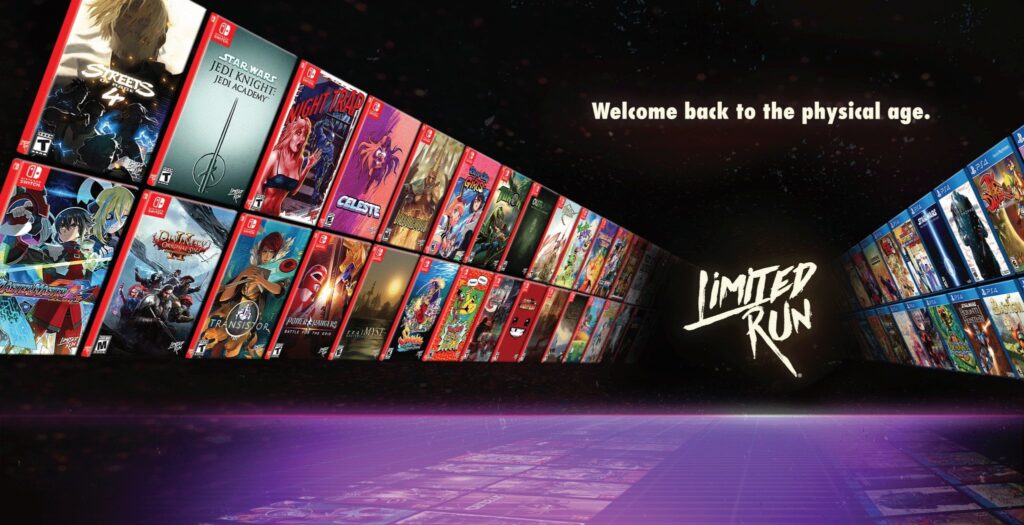
In today’s increasingly-digital landscape, more and more consumers have pivoted to purchasing digital versions of the latest games. The shift has been so prominent that with the upcoming next-generation of consoles, digital-only versions of both the PlayStation 5 and Xbox Series are being offered.
Physical media is still a very viable option, though. Physical copies of games are still being produced, and it is likely to be a while before the digital wave completely washes them away. One segment in particular has been staying strong in this new era of digital distribution: the collector’s edition market. However, even collector’s editions (CEs) have had to adapt to the changing times.
One of the main questions now is how to make CEs relevant to digital consumers. This requires publishers, retailers, and partners to consider a constantly evolving landscape when building strategies for collector’s editions. Mads Buch Nielsen, former sales director at Scanovo Market, tells me that a “soft-bundled” collector’s edition is an option.
Scanavo Market has created several CEs for video games in the past, including for State of Decay 2 and Need for Speed. The State of Decay 2 collector’s edition was a soft-bundled one, which didn’t include a copy of the game. This approach allows consumers to select between standard or deluxe editions of a digital copy of a game if they’re both available.
Nielsen said that he expects to see more soft-bundled CEs in the years to come as he anticipates that they will be increasingly accepted by consumers with the digital transition.
“By moving away from a traditional hard-bundled collector’s edition that by default includes the game on a disc, to the more agile soft-bundledpackage,” he explained. “Then gamers are offered the choice to buy their games through their desired retailer channel, shop for the cheapest option, download digitally, or access them via streaming services.”

This relatively new method of building CEs may not only benefit the consumer, but could also help publishers as well. Josh Fairhurst, co-founder of Limited Run Games, a company that specializes in releasing digital games in physical media, says that CEs that don’t include a copy of the game aren’t necessarily always a byproduct of digital distribution.
He explained that not including a copy of the game can free publishers from several obligations such as increased royalties to platform holders, art guidelines, and rating board guidelines. “It gives those publishers more creative freedom with regards to what content they can include and what art they are able to put on the package.”
So, why not create a version of a CE that has a copy of the physical game and one that doesn’t? Well, it’s not as simple as it seems. One of the most revered games from this generation, Red Dead Redemption 2, had a collector’s box that came with a variety of physical goodies, but was missing a copy of the game.
Rockstar’s reasoning for this was exactly as Nielsen described with the soft-bundle; Rockstar wanted to ensure that players could pair their collector’s box with their own personal choice of a physical or digital copy of Red Dead Redemption 2.
Angela McReynolds, CEO of Development Plus Inc., speculates Rockstar probably didn’t offer multiple SKUs with and without a copy of the game because of how retailers handle CEs. Development Plus Inc. has created CEs for video games such as Dark Souls 3, Watch Dogs 2, and The Last Guardian.
“GameStop or Target isn’t going to want to deal with multiple complex SKUs where they could over or underestimate quantities and be stuck with items that don’t sell or sell out too quickly and anger fans,” she explained.
An important factor that goes into CEs is pricing. Setting the right price for one is a difficult practice, but it’s important to choose one that appeals to consumers. Nielsen said that Scanovo, as a licensee, collaborates with video game publishers to create CEs.

From a commercial perspective, bottom up and top down estimates are closely assessed during early concept planning stages for a CE. They have to make sure that it is an attractive business case to all parties throughout the entire supply chain as it helps to get everyone on board and invest in the project.
Factors such as quality, product mix, value proposition, positioning, and competition are all vital when setting the recommended retail price. The optimal mix of items in a CE should resonate with the game and its fanbase to justify the premium cost.
“For already established franchises with a loyal fanbase, it might make good sense to build a high-end CE at a premium price, whereas for small IPs and new games, then a more moderate build at lower cost might appeal better to a broader audience,” explained Nielsen.
McReynolds added that the retail price needs to reflect the consumer’s perception of all of the items in the bundle. For example, take a $150 CE with a steelbook, statue, and artbook which also includes a standard edition of the game. That means from a consumer perspective, those three items together need to feel worth at least $90 or greater, since the copy of the game is $60 alone.
It’s important to also compare CEs to others in the market, McReynolds noted. “You can’t price your CE out of the range of similar titles unless you’re doing a very unusual or standout product. Incorrect pricing can result in reduced sales or consumer social backlash.”
Pricing has been a particular sore spot with soft-bundle CEs. Nielsen said that communication and managing fan expectations when marketing a CE are very important. Back in 2018 when the State of Decay 2 CE was revealed, he recalled that there was mixed consumer feedback. This was because it was a time where most CEs still included the game and consumers expected as such.
While consumers will always respond better when a CE is bundled with a physical copy of the game, McReynolds thinks that over time, consumers will come to appreciate the choice of how to and when to buy the game separately.
Both McReynolds and Fairhurst said that pricing a CE without a game is relatively straightforward. Fairhurst noted that it’s similar to determining the price of any standalone merchandise, with publishers looking at each individual piece of content in a CE and then finding comparable merch items available online. From there, they’ll find the customer value of the items and proceed to do the same for the items in the CE.

Fairhurst added, “I’m likely oversimplifying things, as [the publisher’s] cost of goods and gut feelings will still have to come into play.”
If a CE with a game included is $200, then subtracting the $60 game would price a CE without it at $140. If a bundle of items is truly compelling, sometimes the price might be rounded up to $149.99. McReynolds clarifies, “There is certainly room to price collectible-only CEs at established retail price tiers like $99.99 or $39.99. Mentally, the consumer just has to feel the value is there.”
Digital distribution might reduce the number of CEs on the market, but it also has the potential to make them feel more special. “I think it’s all about making a game launch special and haloing a limited edition exclusive product timed with that launch. This is true whether you have a physical game or not,” said McReynolds.
She continued, “In the era of social media all game studios and publishers are looking for ways to stand out.” CEs still offer value as marketing vehicles and drive excitement around a game launch. Streamers and content creators making unboxing videos with statues, along with Tweets from excited fans, all drive consumer engagement and elevate brand perception.
Nielsen mentioned that consumer products and CEs can still represent a significant business opportunity.
“While publishers shift focus to digital distribution, then merchandise, apparel and CEs will start to play a more important role in publishers’ retail presence and part of their brand extension strategies, while acting as a great tool to honor fan loyalty,” he said.
The value of the global video games market is rising, and gaming culture has become more mainstream. In particular, esports athletes are receiving more recognition, which can generate new demand for CEs and game-branded consumer products that fans can flaunt. Nielsen confidently exclaimed that this demand won’t be ignored by either publishers or their partners.
From a hobbyist perspective, video game collectors are definitely worried about the digital transition. Limited Run Games was started in 2015 because Josh said that he and his business partners were frustrated at the prospect of an all-digital future. There definitely is still a market for physical media, as other companies have risen following in Limited Run Games’s footsteps.
As the next generation of consoles arrive, there have been significant changes. Some companies, like Sony and Activision, have increased the prices on some standard retail games to $70. The last price jump occurred in 2005 during the Xbox 360 generation with games going from $49.99 to $59.99, and have remained at that point for the last 15 years. Selling a $60 game today is equivalent to selling a $45 game in 2005.
Raising prices makes sense to Fairhurst, who said, “It’s not sustainable. Prices have to rise to try and compensate for that inflation. On [Limited Run Games’] end, we’re planning to maintain our current pricing model on PS5, so we don’t necessarily expect that our games will be going up $10 in price across the board.”
In regards to the PlayStation 5 Digital Edition and Xbox Series S, Fairhurst figured that it’s inevitable that mainstream consumers will embrace all-digital consoles eventually. This upcoming generation will certainly be the first one with a big attempt to push an all-digital future.
“I do foresee Microsoft and Sony going all-digital within the next decade or decade and a half,” he concluded. “I think this will really catalyze consumer demand for physical media, though, as people who love it will really start fighting to keep it alive.”
 GameDaily.biz © 2025 | All Rights Reserved.
GameDaily.biz © 2025 | All Rights Reserved.